Answer these simple questions and we will find you the BEST prices
Which type of solar quotes do you need?
It only takes 30 seconds
100% free with no obligation

Get Free quotes from loft conversion specialists near you

Save money by comparing quotes and choosing the most competitive offer

The service is 100% free and with no obligation
- GreenMatch
- Loft Conversion
- Loft Conversion Regulations
- Party Wall Agreement
Party Wall Agreement For Loft Conversions: Guide

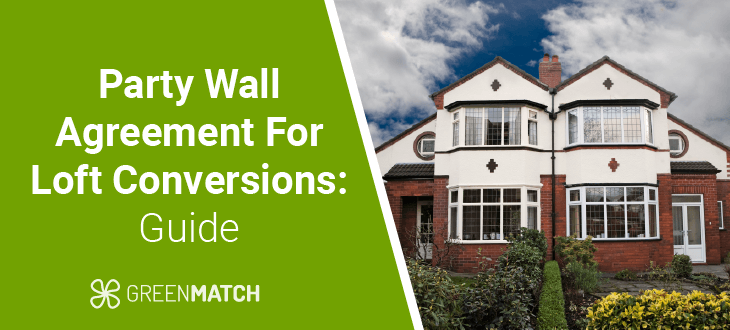
If you're considering a loft conversion, it's crucial to understand the requirements of the Party Wall etc. Act 1996. This is legislation that outlines your duties and rights when your home improvements involve a shared wall with a neighbouring property.
This guide will walk you through the essential steps to secure a Party Wall Agreement, explain the legal implications, and offer practical tips to ensure your loft conversion proceeds smoothly without disputes.
Whether you're just starting to plan or are ready to begin construction, this article will provide you with the vital information you need to move forward confidently and responsibly.
Fill out our quick 30-second form and receive up to 3 free quotes from our network of trusted local installers, tailored to your home with no extra fees or obligations. Click below to begin!
- Describe your needs
- Get free quotes
- Choose the best offer
It only takes 30 seconds



Do you need a Party Wall Agreement for a loft conversion?
If your property includes a wall that adjoins a neighbouring structure, the answer is yes. Under the Party Wall etc. Act 1996, a Party Wall Agreement is mandatory before initiating any construction work on your loft if it involves a shared wall.
This is particularly crucial for mid-terraced homes, where the terrace house loft conversion will require party wall agreements on both sides of the property.
Generally, semi-detached houses will also need a Party Wall Agreement if the conversion affects the semi-detached party wall of the adjoining house.
However, detached homes typically do not require a Party Wall Agreement for attic conversion in the UK because they perform loft conversions without touching party walls. This works unless there are specific boundary walls or other structures that might be impacted.
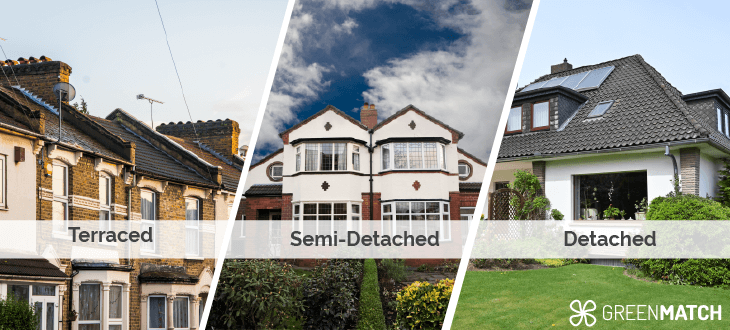
In loft conversions, certain types of work on party walls will specifically require an agreement, such as:
- Demolishing and rebuilding part of the party wall: This is often necessary when the existing wall isn't strong enough to support the new structure.
- Increasing the height or thickness of the party wall: Changes to the dimensions of the party wall can affect the structural support and integrity of connected properties.
- Underpinning the party wall: This involves deepening the foundations of the party wall and is often required if the loft conversion adds significant weight to the existing structure.
This is especially important for dormer loft conversions, which involve the alteration of the roof structure by extending it vertically.
This extension often necessitates structural changes that directly interface with the party wall, potentially affecting its integrity or stability. Consequently, there's a heightened need to address these concerns through a party wall agreement.

Can a neighbour refuse a loft conversion?
Yes, under certain circumstances. Neighbours can oppose a loft conversion if they believe the proposed changes could negatively impact their property. This could be due to concerns about structural integrity, potential damage, or even loss of light.
Party Wall etc. Act 1996 defines loft conversion neighbours' rights to ensure that all modifications to shared or adjoining property walls are undertaken fairly and responsibly. Here’s what your neighbours are entitled to:
- Right to a notice: Neighbours must be given notice of the impending works. For most types of work, including loft conversions that affect party walls, the notice period is at least two months.
- Right to dispute: If neighbours have concerns about the loft conversion, they can formally dispute the notice. This doesn’t outright block the project but triggers a mandatory dispute resolution process, usually involving party wall surveyors.
- Right to protection: The law provides mechanisms to protect the adjoining owners from potential damages. This includes the right to a survey before and after the works are carried out, ensuring any damage caused by the loft conversion is documented and appropriately addressed.
If a neighbour's refusal is upheld through the dispute resolution process, you may have to modify your loft conversion plans to mitigate the concerns raised. This could involve additional loft conversion costs and delays.
What happens if you don't have a Party Wall Agreement?
Failing to secure a Party Wall Agreement before starting a loft conversion can lead to significant legal and financial consequences. Here's what could potentially happen if this crucial step is overlooked.
Legal consequences
If a Party Wall Agreement is not in place and construction begins, neighbours have the right to take legal action against the property owner.
Under the Party Wall etc. Act 1996, adjoining property owners are protected against any adverse effects that might arise from nearby construction work. This includes the right to demand that the work cease immediately until an agreement is finalised.
Legal disputes can result in court orders demanding not only a halt on further construction but also possibly mandating the removal or alteration of work already completed.
Costly repairs and modifications
Without a Party Wall Agreement, any damage caused to neighbouring properties may need to be repaired at the expense of the person who initiated the loft conversion. These costs can be substantial, depending on the extent of the damage.
Additionally, if the court finds the work to be excessively disruptive or damaging to the adjoining property, it may require modifications to the construction plan or even the restoration of the property to its original condition, further increasing expenses.
The high price of non-compliance
Costs associated with resolving disputes after work has commenced can be significantly higher than those incurred by setting up a proper Party Wall Agreement in advance.
For example, typical legal fees for resolving a dispute could range from £8,000 to £10,000, sometimes even reaching £35,000, according to Stokemont Surveyors! The average cost of preparing a Party Wall Agreement is usually between £700 and £1,000.
Can you do a loft conversion without touching a party wall?
While it might technically be possible to perform a loft conversion without directly impacting a party wall, the requirements of the Party Wall etc. Act 1996 necessitate at least notifying adjoining owners through a Party Wall Notice.
This is to ensure that even non-intrusive works do not inadvertently cause issues such as damage to the adjoining property. Therefore, even if the conversion is minor and does not directly modify the party wall, the safety and legality of proceeding without an agreement are not guaranteed.
For example, although Velux conversions are less likely to require modifications to a party wall compared to other types of loft conversion, they might still require scaffolding or other temporary structures that could encroach on a neighbour’s property.
In such cases, it's good practice, though not always legally required, to inform neighbours and ensure that any necessary permissions are secured to maintain good relations and avoid potential grievances.
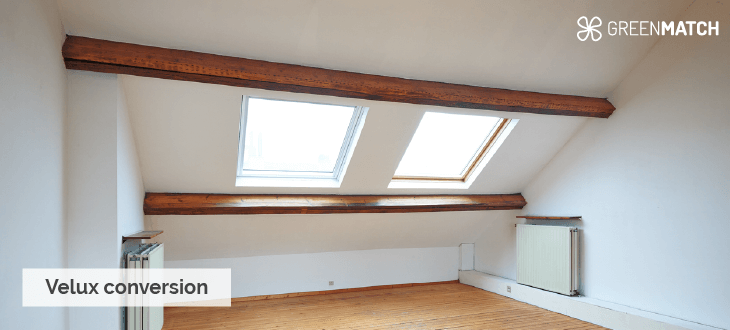
In the case of detached houses, where there are no shared walls with neighbours, a loft conversion can generally proceed without a Party Wall Agreement.
Here, the work does not affect any adjoining property, so the legal framework designed to protect neighbours from potential impacts of construction work does not apply.
What is the Party Wall Act 1996?
The Party Wall etc. Act 1996 is legislation in England and Wales that provides a framework for preventing and resolving disputes related to party walls, boundary walls, and excavations near neighbouring buildings.
It is designed to ensure that property owners can undertake certain works, including loft conversions, within their premises, while protecting the interests of adjoining property owners.
The Act defines a "party wall" as a wall that stands on the lands of two (or more) owners and forms part of a building — this could be a wall that adjoins another building or a wall that is used by more than one owner to separate their buildings. The Act also covers floor partitions that separate flats or apartments.
The primary purposes of the Party Wall Act are to:
- Prevent building work by one neighbour that can undermine the structural integrity of shared walls or neighbouring properties.
- Minimise disputes by ensuring property owners notify their neighbours in advance of certain proposed works.
- Provide a clear legal framework for resolving disputes should they arise.
While the Party Wall etc. Act 1996 applies to England and Wales, it does not extend to Scotland or Northern Ireland, where different legal principles and procedures apply.
- Scotland: Scottish law does not have an equivalent to the Party Wall Act. Instead, common law is used to handle party wall matters. Disputes are generally settled through common law principles pertaining to property rights and negligence.
- Northern Ireland: Similar to Scotland, Northern Ireland does not have a specific Party Wall Act. Disputes are handled through common law regarding property and civil liability.
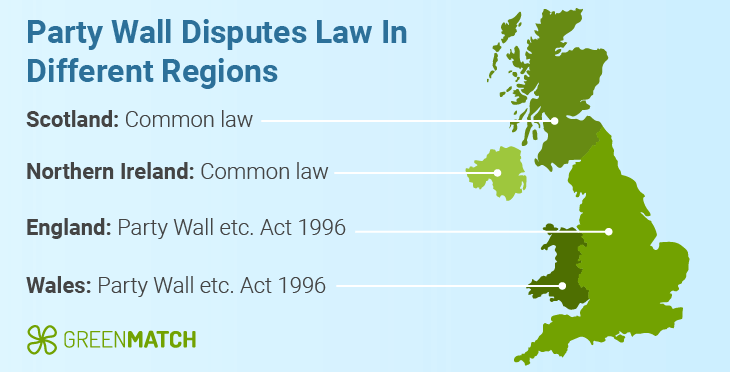
How much does a Party Wall Agreement for a loft conversion cost?
The costs for hiring a single party wall surveyor can range between £900 and £2,700 for a typical loft conversion that affects a single shared party wall. This includes the surveyor's fees to prepare and manage the agreement between you and your neighbour.
If two party wall surveyors are needed — for instance, when each party hires their own surveyor — the costs could double, ranging from £1,800 to £5,400.
Loft conversion Party Wall Agreement cost varies significantly depending on the type and size of the property, the number of shared walls, the complexity of the project, the number of surveyors involved, and any additional legal fees that may arise from disputes.
Generally, larger properties with complex designs, multiple shared walls, or significant structural changes require more extensive surveying and legal oversight, leading to higher costs.
The homeowner undertaking the loft conversion is responsible for covering the costs of the Party Wall Agreement. Neighbours who benefit from the increased safety and compliance facilitated by the agreement are not typically responsible for these costs.
How can you get a Party Wall Agreement
To initiate work that affects a shared structure, you must serve a Party Wall Notice to your neighbours detailing the work and its start date at least two months before commencing.
If your neighbours do not agree or respond within 14 days, a Party Wall Surveyor must be appointed to prepare a Party Wall Award, which, once agreed upon, allows the work to begin according to the outlined terms.
Serving a Party Wall Notice involves delivering a written notice to your neighbour. It should include:
- The name(s) of the property owner(s)
- A clear statement that it is a Party Wall Notice under the provisions of the Party Wall etc. Act 1996
- A full description of the proposed works and the planned start date
- Architectural drawings or plans of the proposed works
- Contact information for any appointed party wall surveyor
Templates for Party Wall Notices and Agreements can be found online. Reliable sources include the websites of legal firms specialising in property law, professional bodies for surveyors such as the Royal Institution of Chartered Surveyors (RICS), or government websites providing guidance on party wall procedures.
Loft conversion Party Wall Agreement templates help ensure that all legal information is correctly included and presented.
What happens after you serve the notice
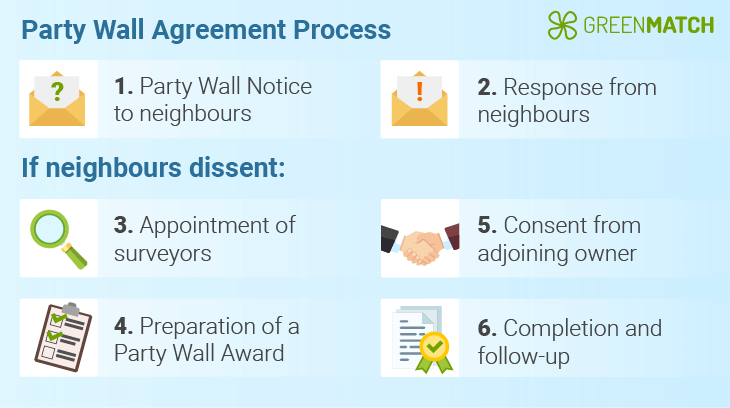
Once a Party Wall Notice is served, the process towards securing a Party Wall Agreement enters a critical phase. This involves several steps designed to ensure that all works are legally compliant and neighbourly relations are maintained.
1. Response from neighbours
After serving the Party Wall Notice, your neighbours have 14 days to provide a response. They can either agree or disagree with the proposed works. According to the Party Wall etc. Act 1996, failure to respond within this period is automatically treated as a dissent.
2. Appointment of surveyors
If your neighbour consents to the work, you can proceed as planned. However, if they dissent or do not respond, both parties must appoint a Party Wall Surveyor. You can either appoint one agreed surveyor to act for both, or each neighbour can appoint their own surveyor.
It’s important to select someone with the appropriate qualifications, typically a member of the Royal Institution of Chartered Surveyors (RICS).
3. Preparation of a Party Wall Award
The surveyor(s) will then assess the proposed works, consider the impact on the adjoining property, and draft a Party Wall Award.
This document includes details of the work to be done, how and when it will be carried out, and measures for preventing damage. The Award also includes a schedule of condition — a report documenting the current state of the adjoining property to assess any future claims of damage.
If the loft conversion involves installations like solar panels or other renewable energy systems that could benefit both properties, the Party Wall Agreement could include terms for shared use or cost. This can promote the adoption of renewable energy and offer cost savings over time.
4. Consent from adjoining owner
The draft Award is then provided to the adjoining owner for their consent. If the neighbours agree to the terms of the Award, the work can proceed.
Keep in mind, in addition to obtaining a Party Wall Agreement, it is imperative to ensure that all aspects of your loft conversion comply with local building regulations for loft conversions. These regulations cover a range of important factors, including structural integrity, fire safety, insulation, and access.
5. Completion and follow-up
Once the work is completed, the surveyor may perform a final inspection to ensure compliance with the Award and to assess any damage claims based on the schedule of condition.
For those planning a loft conversion, consulting with loft conversion experts is highly recommended to manage all aspects of your project effectively. Engaging multiple experts and comparing their quotes can greatly enhance the quality and cost-effectiveness of your conversion.
For personalised, competitive service options, fill out our quick 30-second form. This will connect you with up to three trusted local installers, who will provide you with free quotes tailored to your specific needs without any obligations. Click below to start your journey towards a successful loft conversion!
- Describe your needs
- Get free quotes
- Choose the best offer
It only takes 30 seconds



FAQ
Yes, a Party Wall Agreement is generally required for a loft conversion if the work involves alterations to a wall shared with adjoining properties. This is mandated under the Party Wall etc. Act 1996 to prevent disputes and ensure that all structural changes are legally sanctioned and safe.
Absolutely. A loft conversion must be inspected and signed off by either local building control or an approved inspector to ensure it meets the building regulations. This sign-off is crucial to certify that the conversion is structurally sound and complies with all relevant safety standards.
The Party Wall Act 1996 is legislation in England and Wales designed to prevent and resolve disputes regarding party walls, boundary walls, and excavations near neighbouring buildings. It requires property owners to notify adjoining owners about intended wall-related construction works and provides a framework for resolving disputes.
Yes, a neighbour can object to the proposed works covered by a Party Wall Notice. If a neighbour dissents, both parties will need to appoint a surveyor or surveyors to prepare a Party Wall Award, which outlines how the work should proceed and includes conditions to protect the adjoining owner.
Operating without a Party Wall Agreement can lead to legal disputes if the construction affects a party wall or damages adjacent properties. In such cases, the court may issue an injunction to stop further work or mandate remedies that could include compensating damages and altering or reversing the construction.

Tania is an experienced writer who is passionate about addressing environmental issues through her work. Her writing aims to shed light on critical environmental challenges and advocate for sustainable solutions.
We strive to connect our customers with the right product and supplier. Would you like to be part of GreenMatch?

